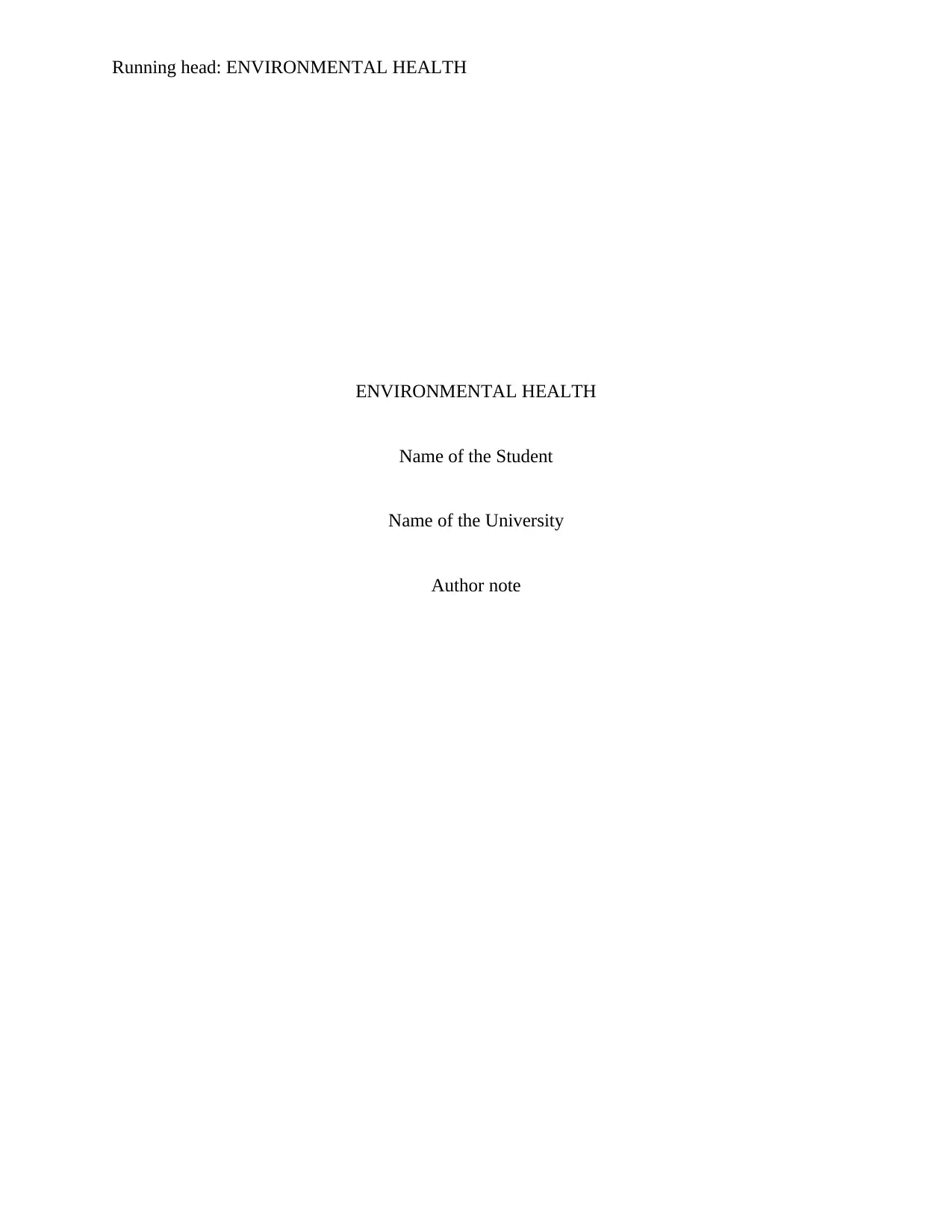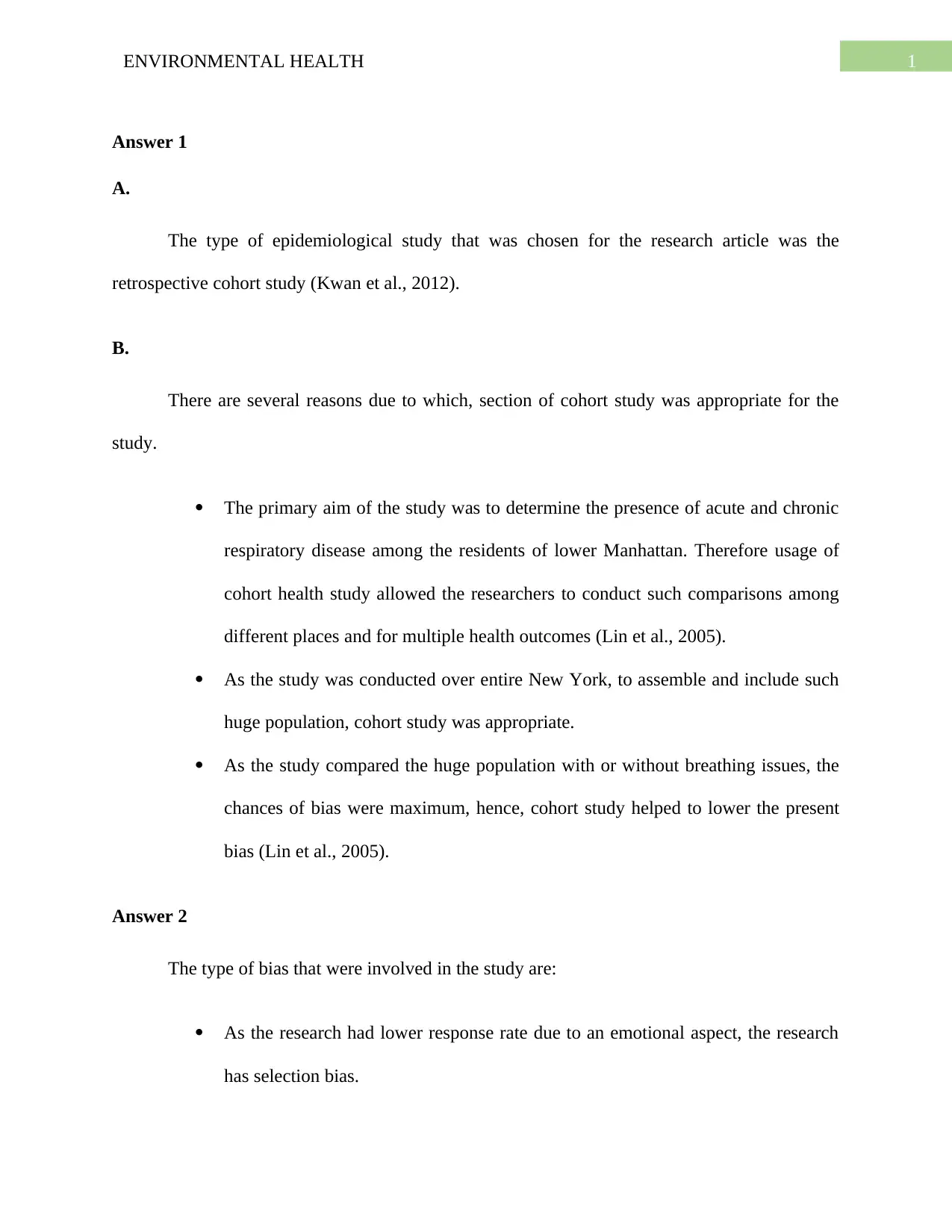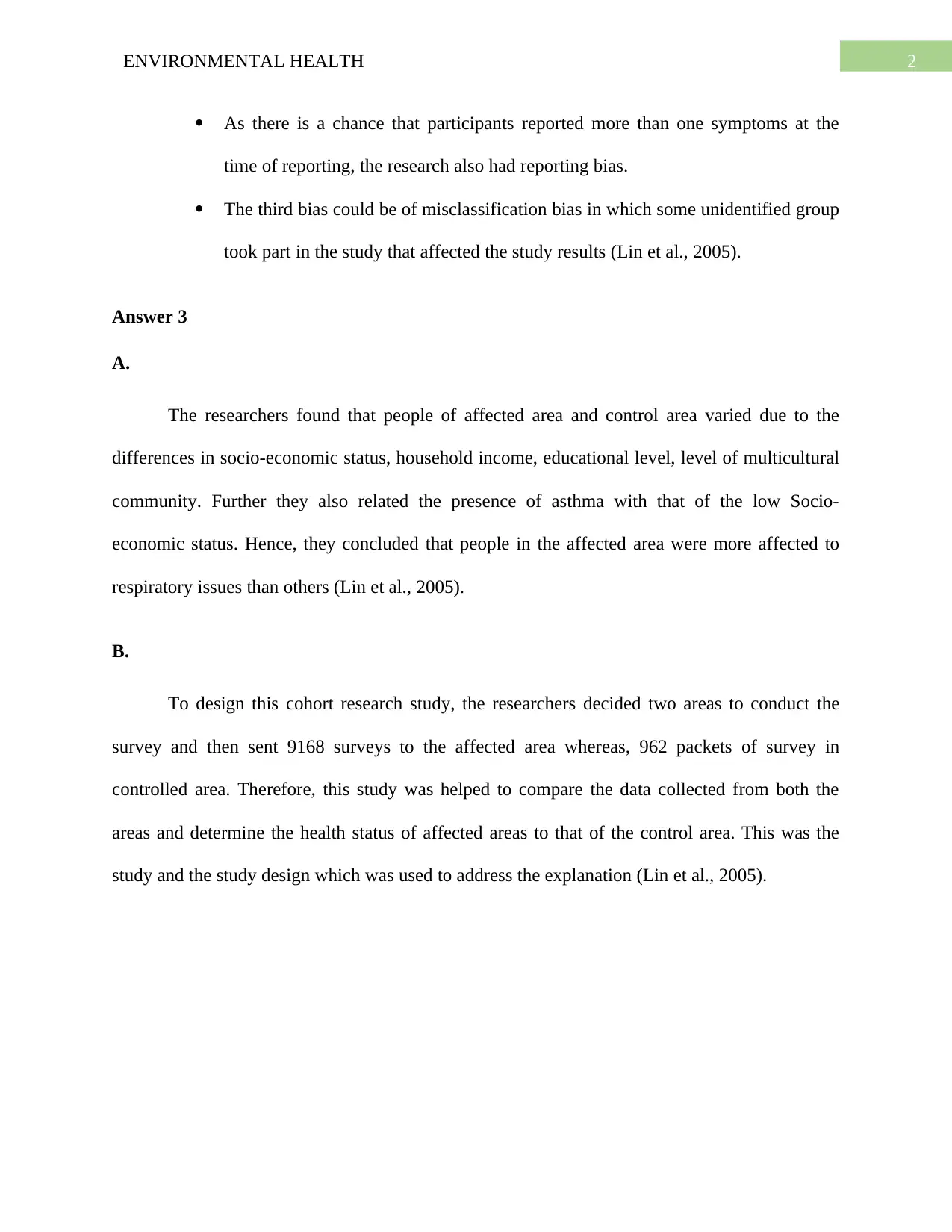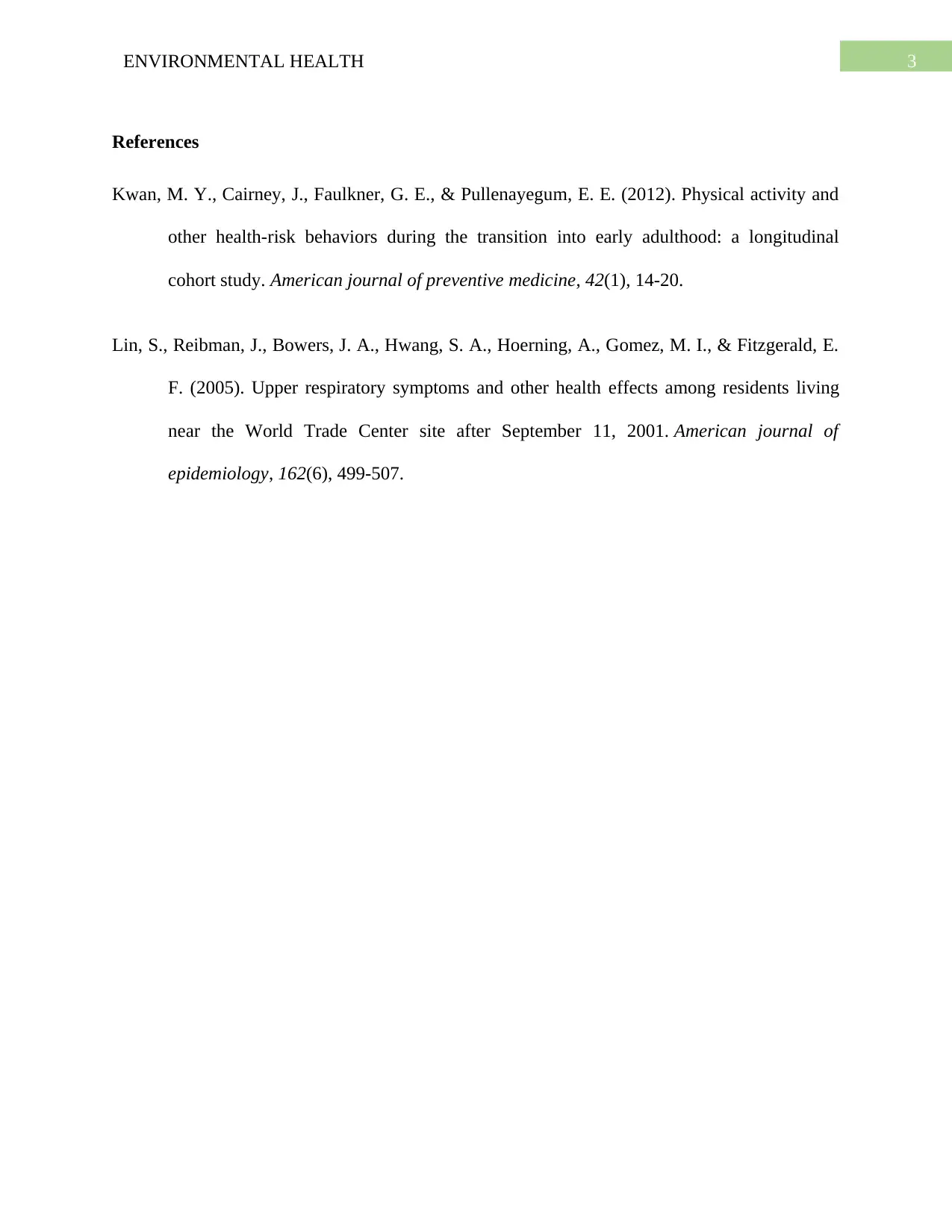Environmental Health: Analysis of a Cohort Study Research Report
VerifiedAdded on 2023/06/05
|4
|577
|106
Report
AI Summary
This report analyzes a cohort study on environmental health, specifically focusing on respiratory diseases and health effects among residents near the World Trade Center site after September 11, 2001. The study employed a retrospective cohort design, comparing health outcomes between affected and control areas. The report examines the study's methodology, including the selection of the cohort study design, potential biases such as selection and misclassification bias, and the impact of socioeconomic factors on health outcomes. The researchers found a correlation between lower socioeconomic status and increased respiratory issues. The report summarizes the research findings, highlighting the differences in health status between the affected and control areas. The study involved sending surveys to residents in both areas to gather data on health symptoms and other relevant factors. The report concludes by referencing the sources used in the research, including the study by Lin et al. (2005), which provided the basis for this analysis.
1 out of 4











![[object Object]](/_next/static/media/star-bottom.7253800d.svg)